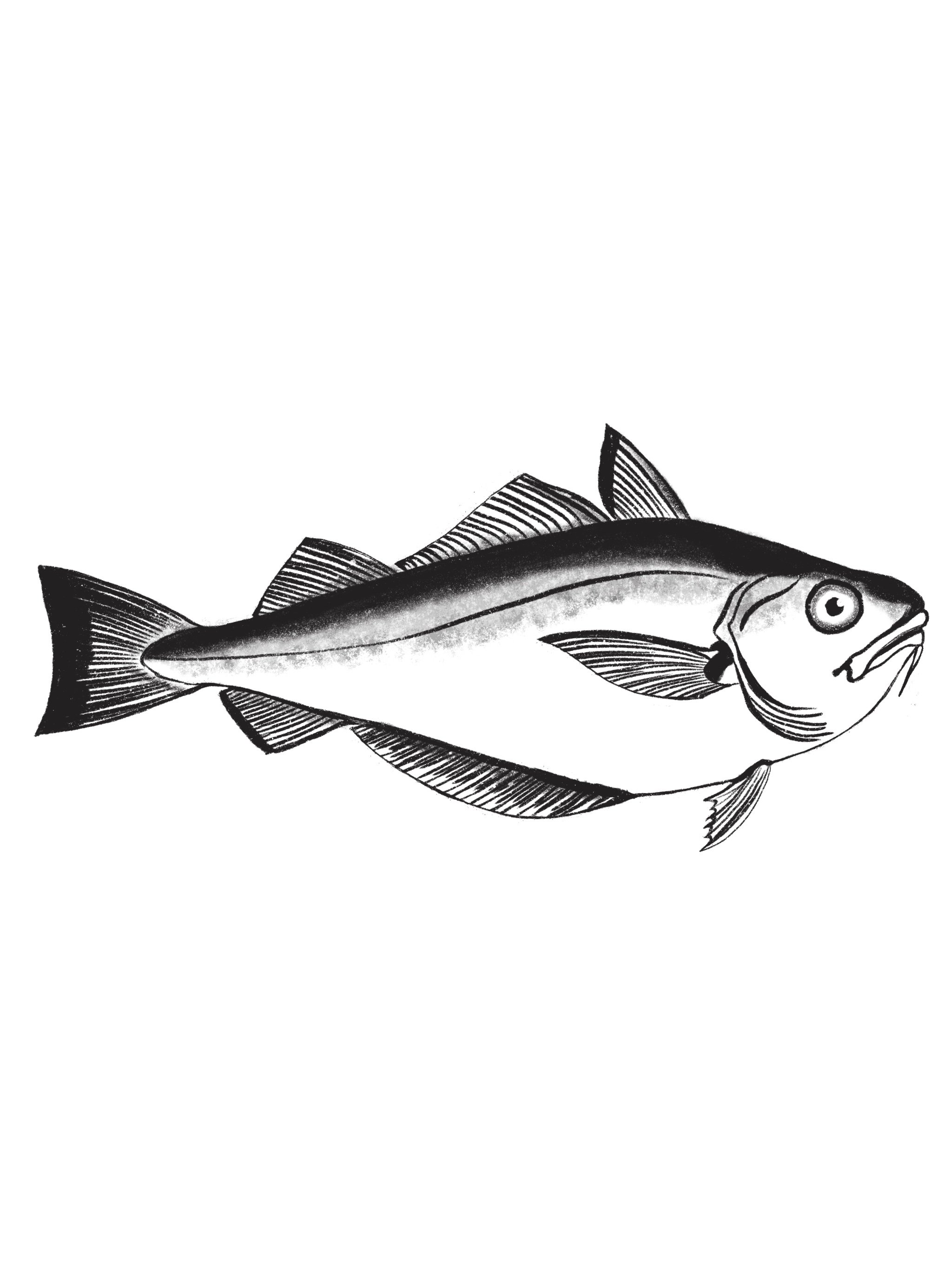
POUTING
Home | Fish & Recipes | Pouting
Artwork by Lucie Galand
Trisopterus luscus
Biology
The boggle eyed beauties are found from the North Sea down to Spain, where they’re called faneca.
They’re not that sought after by fishermen and as such, not much is known about their biology, but they're fast growing and breed like rabbits.
Fishing
There’s little or no market for the pouting and they tend to get turned into fishmeal or fertiliser. This isn’t because of their flavour, it’s because they don’t keep well. They look a bit tired on the fishmonger's slab, even if they're very fresh. This poses a problem for the normal fish supply chain, however, as we source straight from the fishermen, your pouting should still be looking pretty perky.
Eating
As with cod, pollack and whiting a quick salt cure or brine firms up their flesh no end and really draws out the flavour too.
If you’ve got a couple of fish from us this week, eat the pouting first, as it’s at its best on the day it’s caught.
Cook as you would whiting or pollack. In Spain, small fillets of faneca are dipped in egg and breadcrumbs, fried and served with aioli.
RECIPES
(Click to enlarge)
If it's smoked pouting you're after, head to our smoked fish page.




